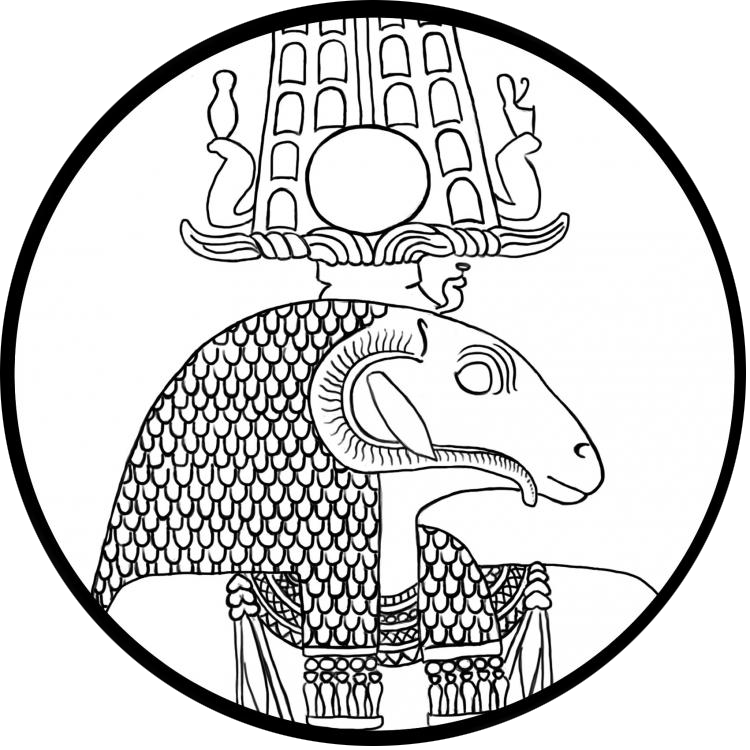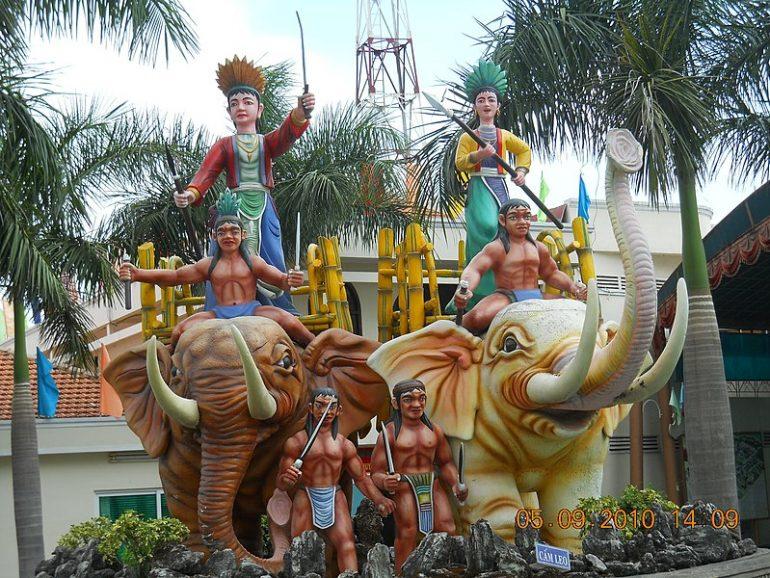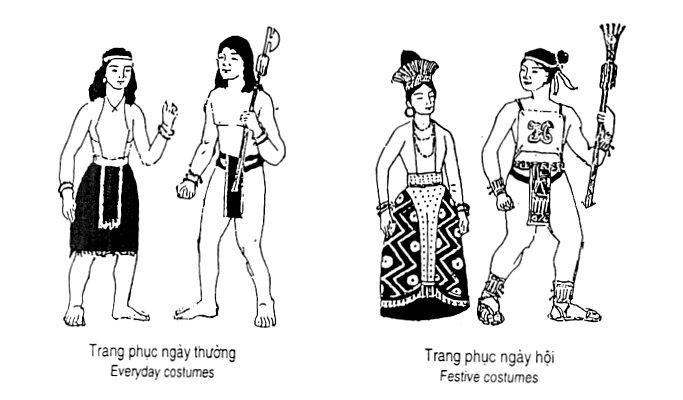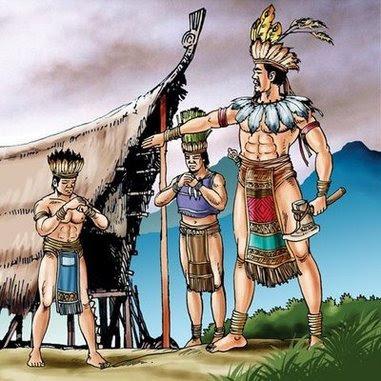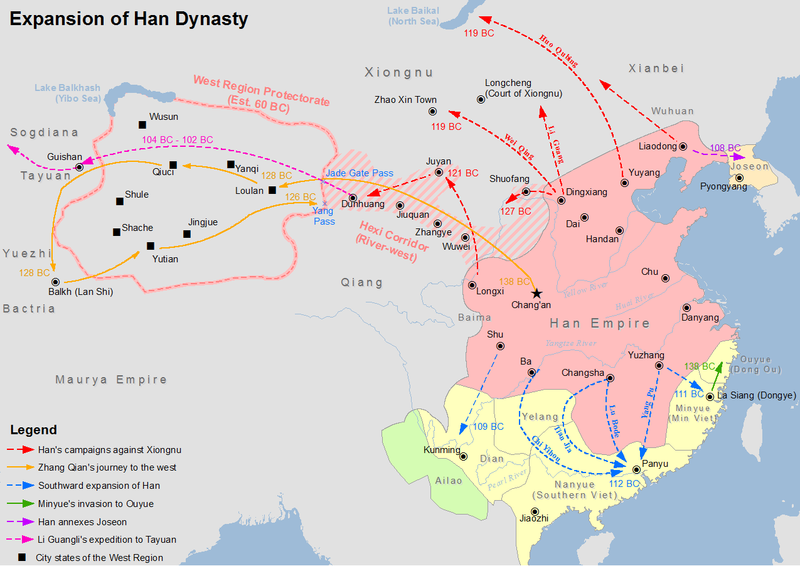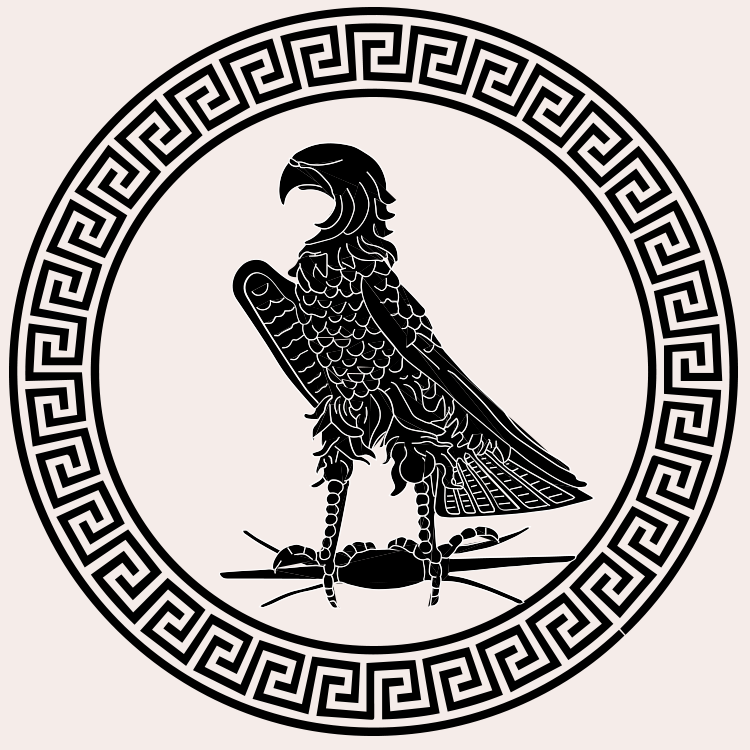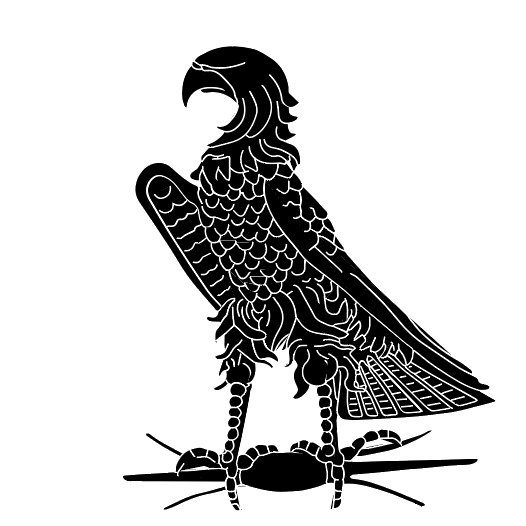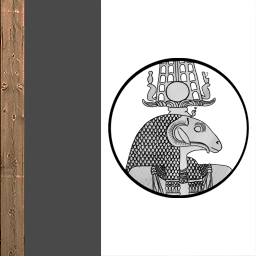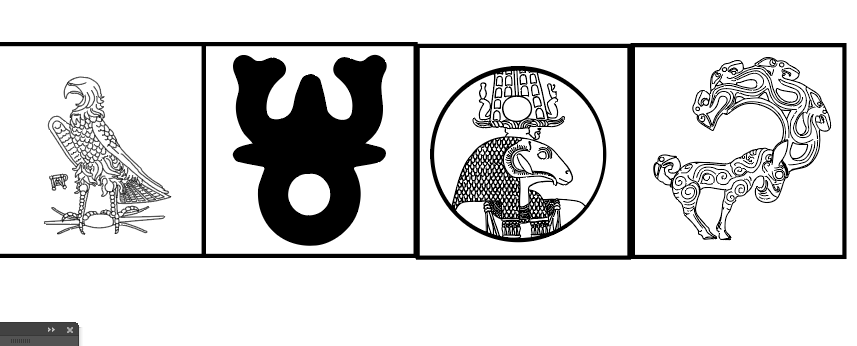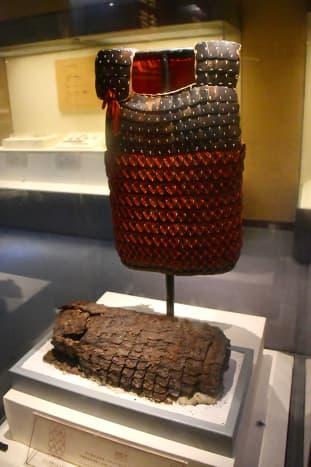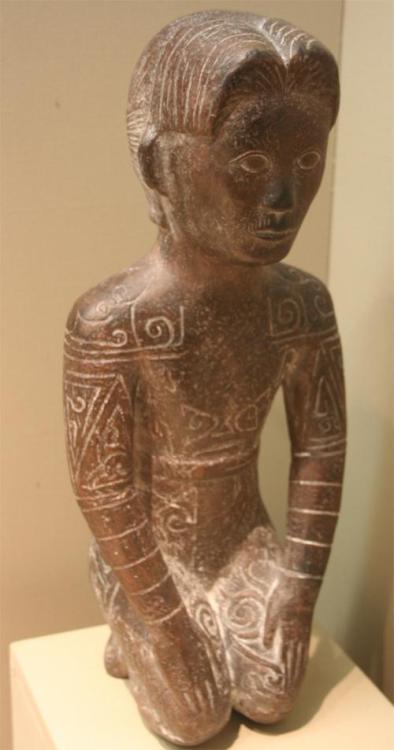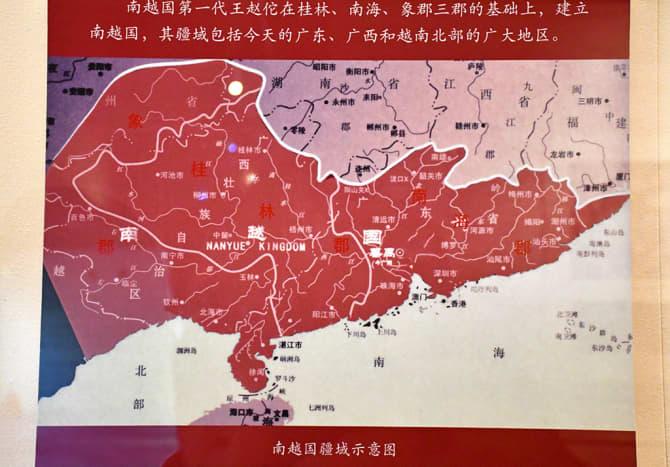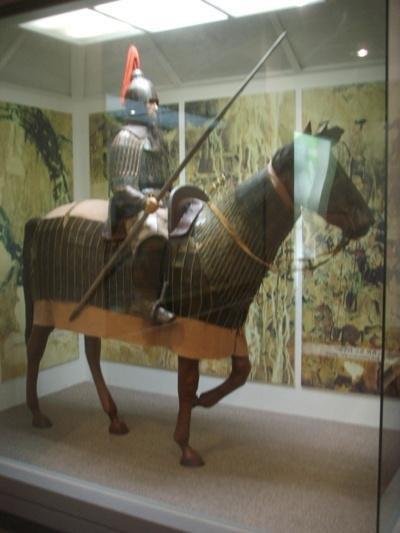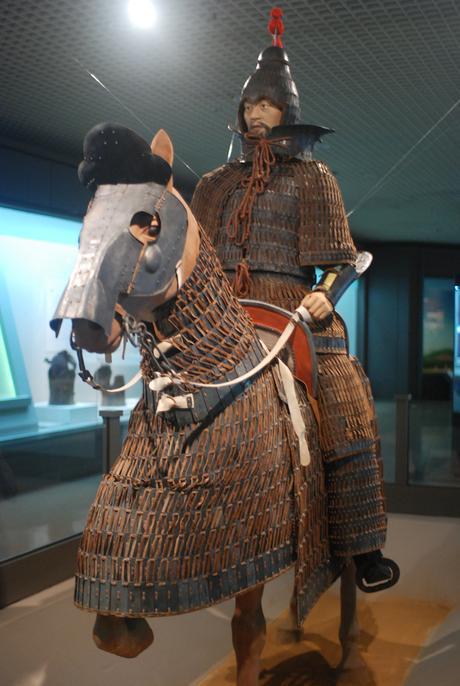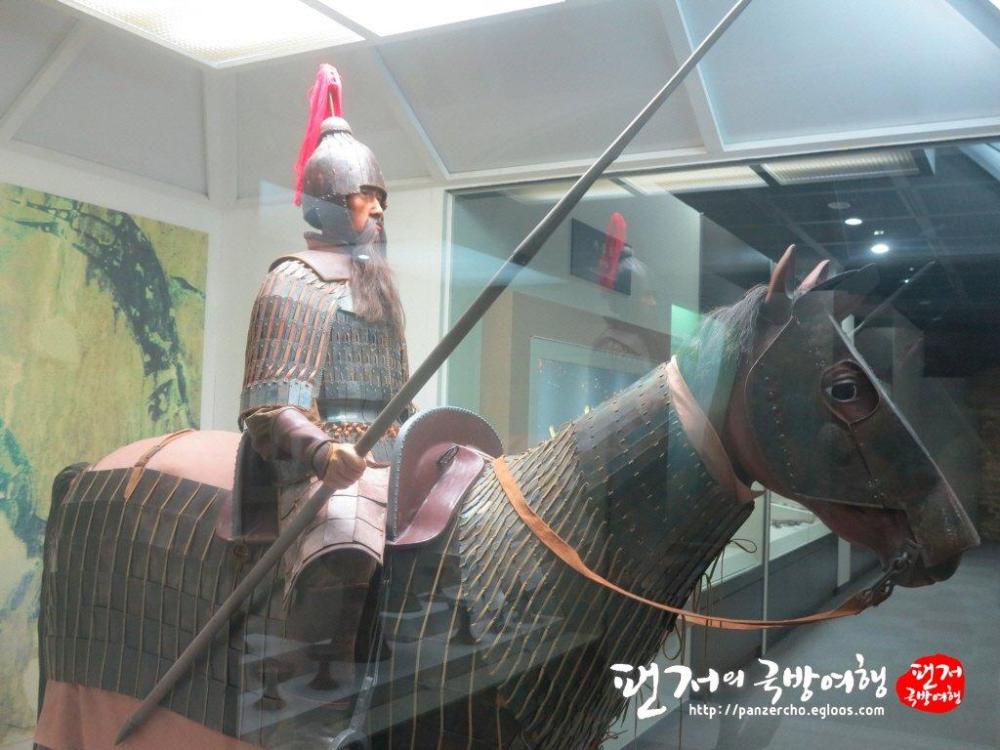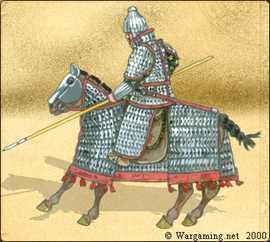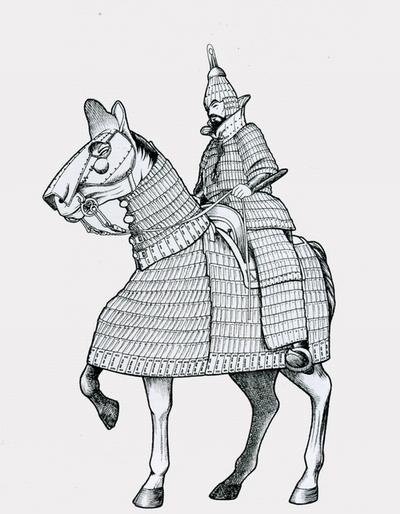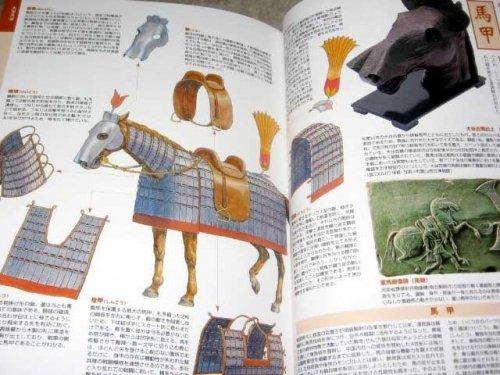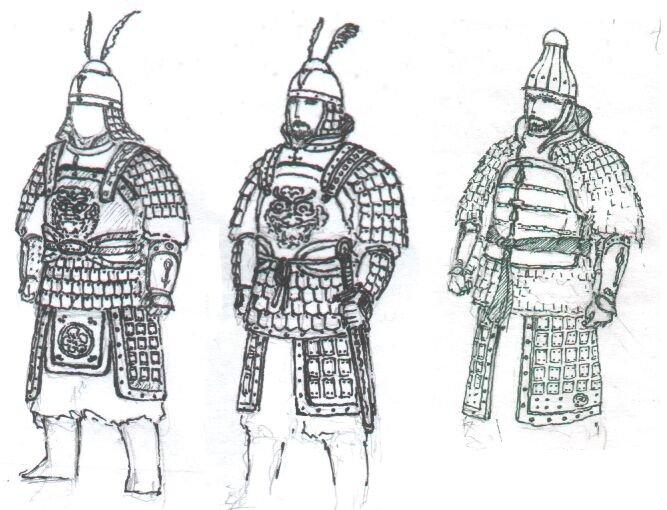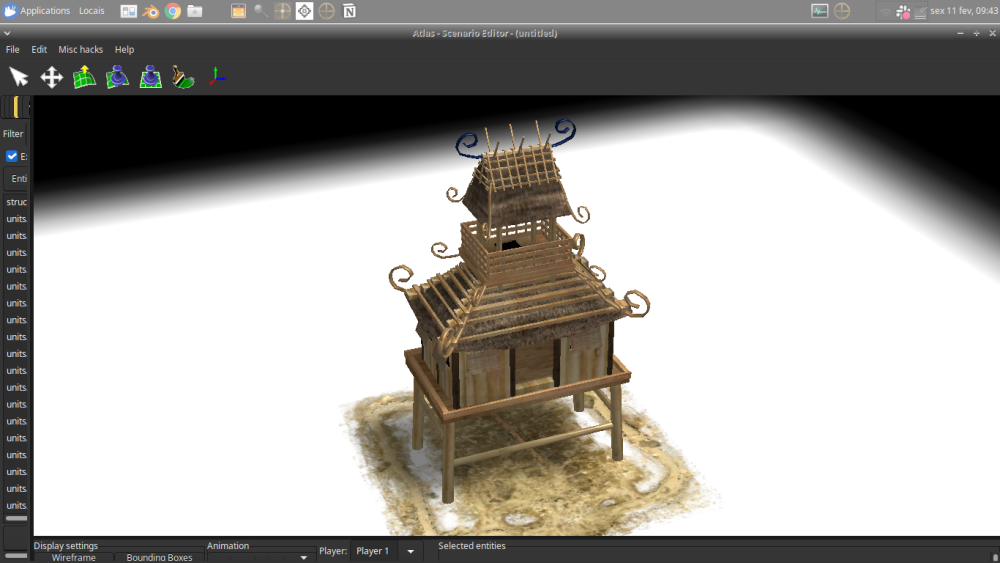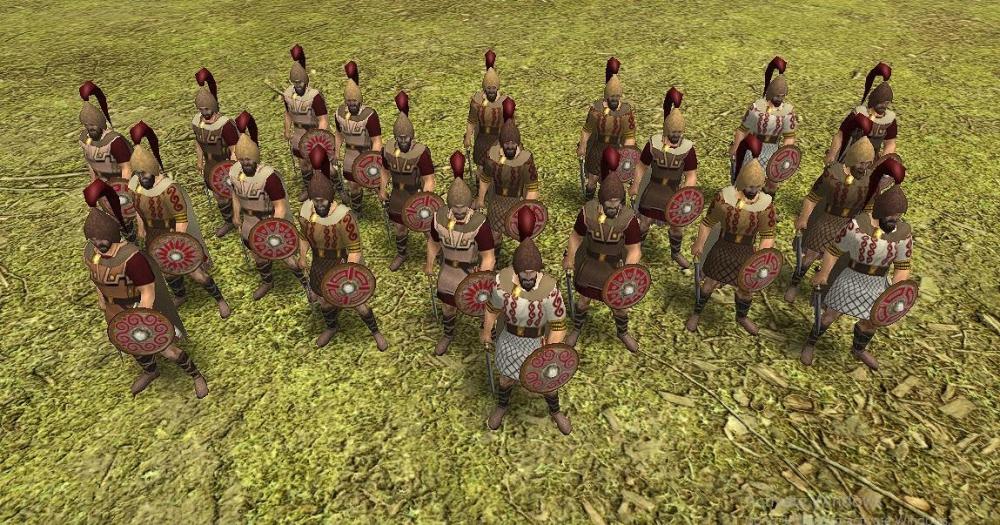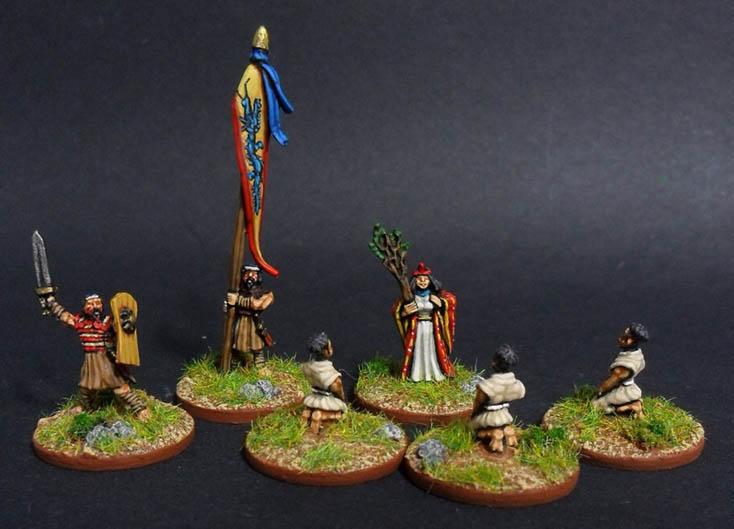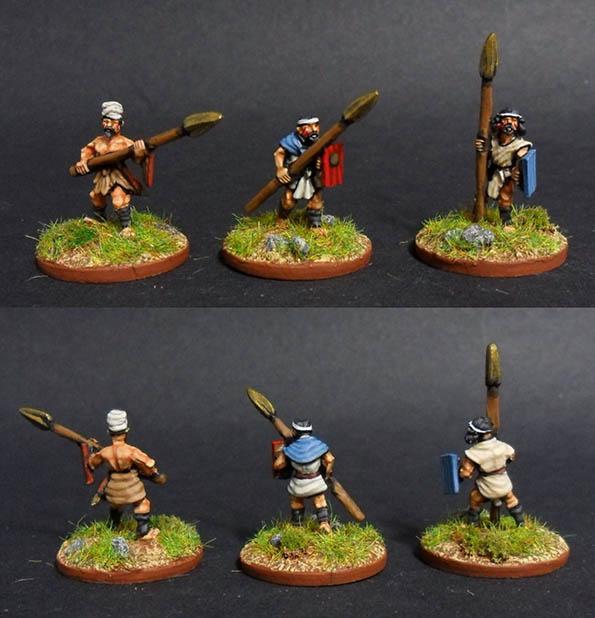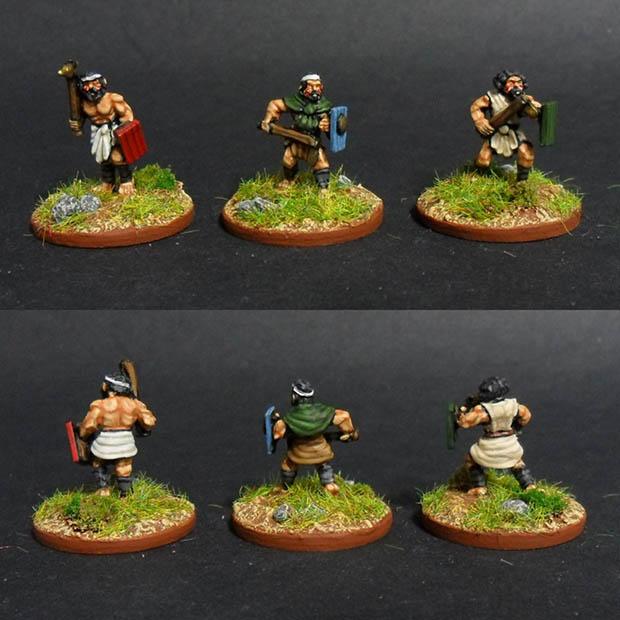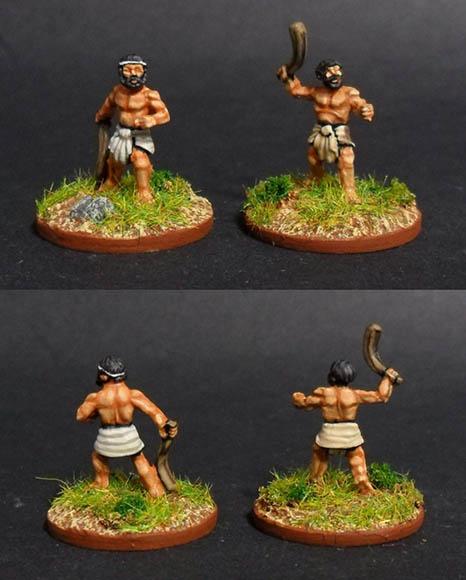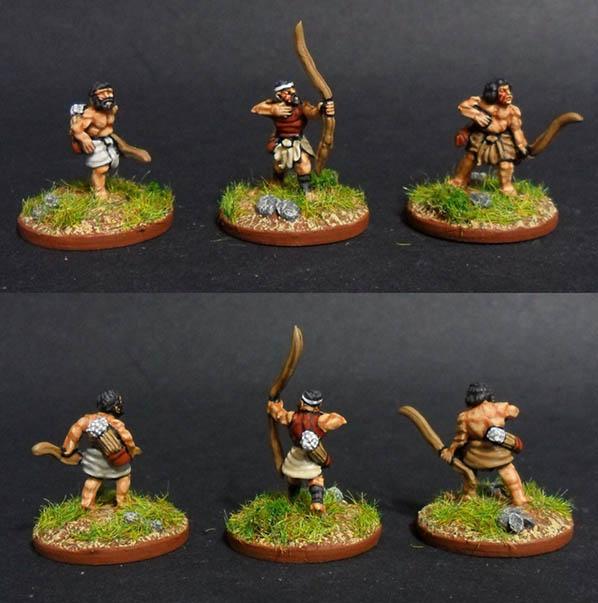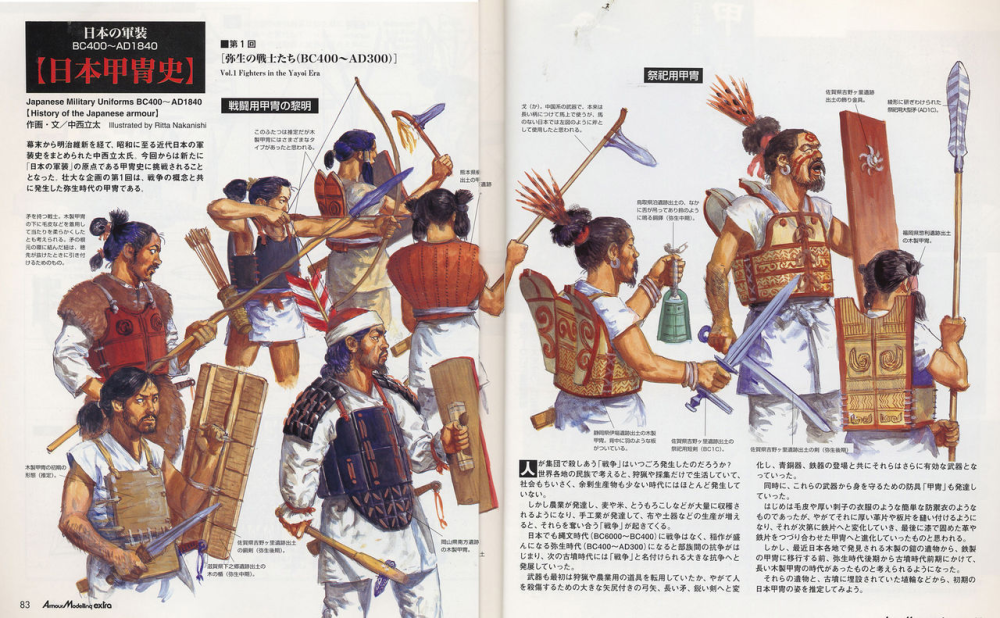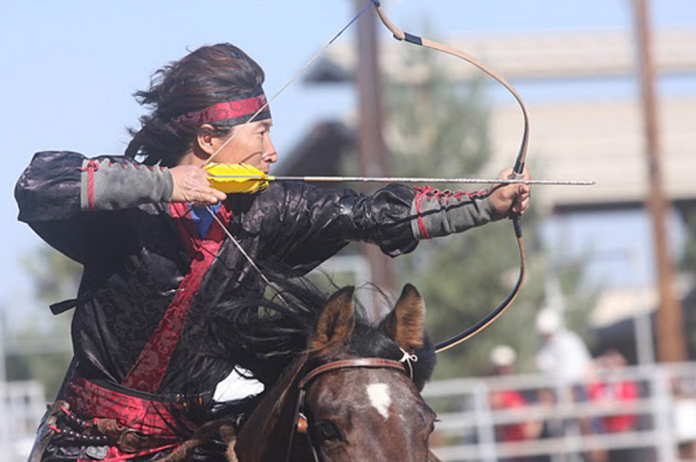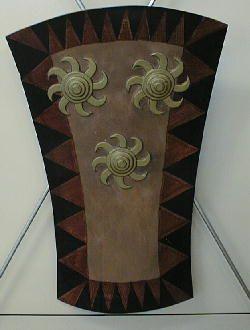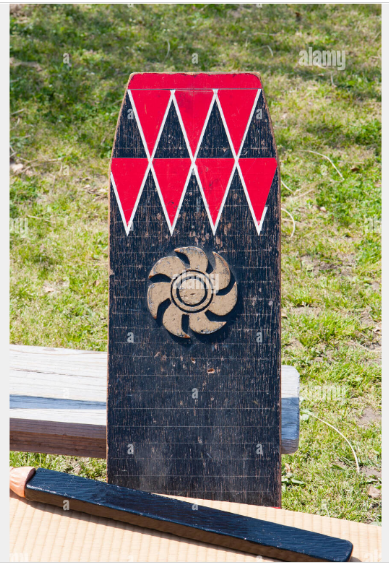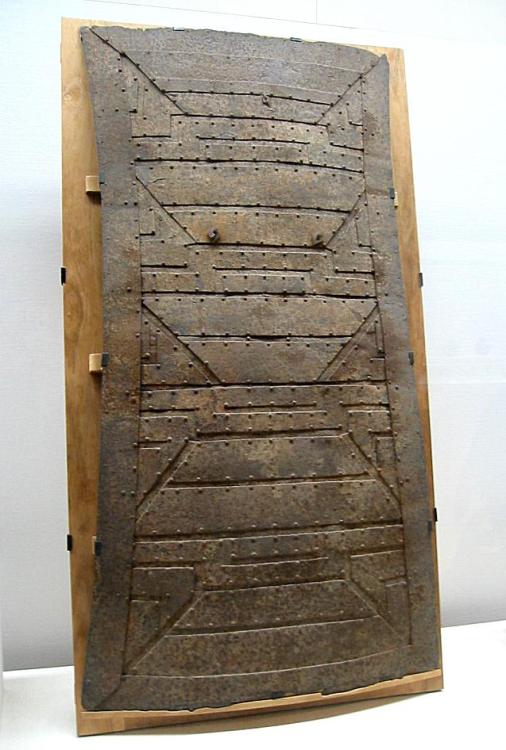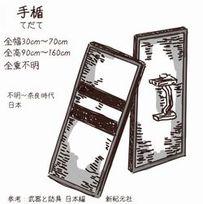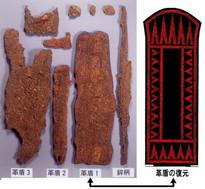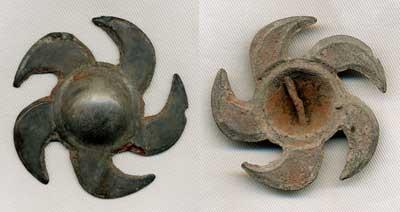Leaderboard
Popular Content
Showing content with the highest reputation on 2022-02-12 in Posts
-
2 points
-
2 points
-
this group was so good that I was even copied by modders from Total war center Forums.2 points
-
2 points
-
basically it was the first mod for 0 AD with the theme for a complete new civilization. Created by Scion Studios by Rob @Kimball . https://www.moddb.com/mods/rote/news/0-ad-rise-of-the-east-debut2 points
-
I think the Han in this alpha could show what kind of love could be given to the other civs subsequently.2 points
-
2 points
-
My curiosity is, how is smurfing still possible: all my attempts to create a smurf account has failed; each time I either get an authentication error or my main account being banned. Is the moderator just targeting me or does this apply to everyone but some people have clever ways to bypass?2 points
-
2 points
-
we will detail the peoples conquered by the Han Empire. Vietnam. Origin. The Lạc Việt or Luoyue (駱越 ~ 雒越; pinyin: Luòyuè ← Middle Chinese: *lɑk̚-ɦʉɐt̚ ← Old Chinese *râk-wat[1]) was a group of multilinguistic, specificly Kra-Dai and Austroasiatic, tribal peoples that inhabited ancient northern Vietnam, and, particularly the ancient Red River Delta,[2] from ca. 700 BC to 100 AD, during the last stage of Neolithic South East Asia and the beginning of classical antiquity period. From the archaeological perspectives, they were known as the Dongsonian. The Lac Viet was known for casting large Heger Type I bronze drums, cultivating paddy rice, and constructing dikes. The Lạc Việt who owned the Bronze Age Đông Sơn culture, which centered at the Red River Delta (now in northern Vietnam, in mainland Southeast Asia),[3] are proposed to be ancestors of Vietnamese people.[4] Another population of Luoyue, who inhabited the Zuo river's valley (now in modern China), are believed to be ancestors of Zhuang people;[5][6] additionally, Luoyue in southern China are believed to be ancestors of Hlai people. Vietnam under Han. The First Era of Northern Domination refers to the period of Vietnamese history during which present-day northern Vietnam was under the rule of the Han dynasty and the Xin dynasty. It is considered the first of four periods of Vietnam under Chinese rule, the first three of which were almost continuous and referred to as Bắc thuộc ("Northern Domination"). In 111 BC, the powerful Chinese Han dynasty conquered the Nanyue kingdom during its expansion southward and incorporated what is now northern Vietnam, together with much of modern Guangdong and Guangxi, into the expanding Han empire.Vietnamese resistance to Han rule culminated in the rebellion of the Trưng Sisters, who expelled the Han in 40 AD and briefly ruled Vietnam until being defeated by the returning Han Chinese army in 43 AD. Nanyue (Chinese: 南越[1] or 南粤[2]; pinyin: Nányuè; Jyutping: Naam4-jyut6; lit. 'Southern Yue'[3]), was an ancient kingdom ruled by Chinese monarchs[4][5] of the Zhao family that covered the modern Chinese subdivisions of Guangdong,[6] Guangxi,[6] Hainan,[7] Hong Kong,[7] Macau,[7] southern Fujian[8] and central to northern Vietnam.[6] Nanyue was established by Zhao Tuo, then Commander of Nanhai of Qin Empire, in 204 BC after the collapse of the Qin dynasty. At first, it consisted of the commanderies Nanhai, Guilin, and Xiang. Indigenous ways of life and ruling class did not experience major Sinitic impact, into the first century AD.[49][50] It was not until the fourth decade of the first century AD that more direct rule and greater efforts at Sinicization were imposed by the Han dynasty.[50][51] The Han fully consolidated their control, replacing the loosely tribute system by a full Han administration and ruling the region directly as provinces.[52][53] While "some form of nominal northern hegemony was installed",[44] there was no evidence that any Chinese-style enterprise controlled the region during the second or first centuries BC as certain historical accounts are relatively Sinocentric and misleading as to the nature of Proto-Vietnamese society before the "real, later imposition of full Chinese power".[54] https://en.m.wikipedia.org/wiki/Nanyue Following the collapse of the Qin dynasty, Zhao Tuo, a general of the Qin dynasty, took advantage of the Qin’s decline and the South region's crumbling political structure to set up his own kingdom, Nanyue.[7] Nanyue was centered on Panyu (modern-day Guangzhou) and stretched from present-day Vietnam to modern-day Hunan.[8] Despite coming from the North, Zhao Tuo assimilated into the Yue culture and created a new identity as the King of Nanyue. Zhao Tuo identified himself as Yue, married a Yue woman, incorporated locals into his army and even fought off Han invasions later on to protect his kingdom.[8][9] He was able to successfully pull away from his past and make a name for himself in Vietnamese history. Some historians do not see him as a foreign conqueror, but as the defender of Vietnam against the Han Chinese, the legitimacy of the Triệu dynasty would be the source of debate and controversies among Vietnamese historians.[8] Nevertheless, Zhaotuo sought to extend his territory further south to the Red River Delta region. Even with Zhao Tuo’s commitment to assimilate, Chinese influences were still introduced to the Yue people. He brought the Han materialistic culture with him to Nanyue leading to a fusion of Han and Yue art styles in music, handcrafts, and motifs.[10] Artifacts uncovered from the Nanyue Kingdom display the cultural mix between the two cultures, especially from the tomb of Zhao Mo which displayed Han grandeur.[10] Besides Zhao Tuo, the Han court and other Chinese people who migrated to the South have also influenced Yue culture. Despite being autonomous from the Han Dynasty, Chinese influences were still prominent in Nanyue. The kingdom was a vassalage to the Han, and often had to make tributes leading to constant interactions.[10] Furthermore, the Nanyue kingdom’s elites were a mix of Northern people who moved to the south and the former Yue elite bringing a mixing of cultures.[8] The elites during this time became culturally dual and would later take advantage of their skills during the Han conquest as the link between the Yue and Han Chinese.[9] One of the main reasons why the Yue culture became so heavily intermingled with Chinese culture was because there were not definitive borders that declared where the southernmost region of China ended and where the territory of the Yue peoples began. Chinese farmers were compelled to move farther and farther south because the climate and terrain were more conducive for their crops. As they crossed the seemingly imaginary border, more and more farmers became acquainted with the Yue peoples and their cultures. This indefinite border made it so that the Chinese culture and the Yue peoples intersected and influenced each other. This would eventually be a contributing factor for why the Chinese empires would travel south to conquer the Yue peoples and assume their land.[9] Due to the fact that the Han Dynasty did not keep detailed records of the personal and cultural identities of the Yue people, a lot of information now known is in relation to their political and governmental roles that the Imperial Han court came into contact with by means of trade and colonization.[3] Those who were referred to as Yue may not have claimed the identity signifier for themselves, so much as that it was a term placed onto them and their culture by outside forces. There is not one “Yue” culture as the term encompassed several different groups of people with varying cultural identities that ranged all throughout the East Asian mainland and what is now considered the southern Chinese Provinces and Northern Vietnam. People native to the southernmost territories were referred to as the “Hundred Yue” which references the numerous different cultures included in this one identity. In 196 BC, Emperor Gaozu sent Lu Jia on a diplomatic mission to Nanyue to officially recognize Zhao Tuo.[11] Nevertheless, relations between Han and Nanyue were sometimes strained.[12] Zhao Tuo resented Empress Lü's ban on exports of metal wares and female livestock to Nanyue.[12] In 183 BC, he proclaimed himself the "Martial Emperor of the Southern Yue" (南越武帝), which implied a perceived status on equal footing with the Han emperor.[13] Two years later, Nanyue attacked the Changsha Kingdom, a constituent kingdom of the Han empire.[13] In 180 BC, Lu Jia led a diplomatic mission to Nanyue that succeeded in convincing Zhao Tuo to give up on his title as emperor and pay homage to Han as a nominal vassal.[12] In 135 BC, King Zhao Mo of Nanyue appealed to the Han court for help against attacking Minyue forces.[14] The Han court responded swiftly and this led to Zhao Mo's agreement to send his son, Prince Zhao Yingqi, to serve in the palace at Chang'an.[15] At the Nanyue court in 113 BC, the Queen Dowager of Nanyue suggested incorporating Nanyue as a kingdom under the suzerainty of the Han empire, thus formally integrating the kingdom on the same terms as the other kingdoms of the Han empire.[15] She was Chinese herself and was married to Zhao Yingqi.[15] However, many Nanyue ministers opposed this suggestion.[15] Lü Jia was the primary Nanyue official to oppose the idea and he led the opposition against the Queen Dowager.[14] In 112 BC, the opposition retaliated violently and executed the Queen Dowager, a provocation that led to the mobilization of a large Han naval force into Nanyue.[14] The Han forces comprised six armies, who traveled by sea, directly southward, or from Sichuan along the Xi River.[16] In 111 BC, General Lu Bode and General Yang Pu advanced towards Panyu (present-day Guangzhou).[14] This resulted in the surrender of Nanyue to the Han empire later that year.[14] Sinicization During the next several hundred years of Chinese rule, sinicization of the newly conquered Nanyue was brought about by a combination of Han imperial military power, regular settlement and an influx of Han Chinese refugees, officers and garrisons, merchants, scholars, bureaucrats, fugitives, and prisoners of war.[17][18] At the same time, Chinese officials were interested in exploiting the region's natural resources and trade potential. In addition, Han Chinese officials seized fertile land conquered from Vietnamese nobles for newly settled Han Chinese immigrants.[19][20] Han rule and government administration brought new influences to the indigenous Vietnamese and the rule of Vietnam as a Chinese province operated as a frontier outpost of the Han Empire.[21][1] The Han dynasty was desperate to extend their control over the fertile Red River Delta, in part as the geographical terrain served as a convenient supply point and trading post for Han ships engaged in the growing maritime trade with various South and Southeast Asian Kingdoms as well as establishing it as a prominent trading post with India and the Roman Empire.[22][23][24] The Han dynasty relied heavily on trade with the Nanyue who produced unique items such as: bronze and pottery incense burners, ivory, and rhinoceros horns. The Han dynasty took advantage of the Yue people’s goods and used them in their maritime trade network that extended from Lingnan through Yunnan to Burma and India.[9] During the first century of Chinese rule, Vietnam was governed leniently and indirectly with no immediate change in indigenous policies. Initially, indigenous Lac Viet people were governed at the local level but with indigenous Vietnamese local officials being replaced with newly settled Han Chinese officials.[25][26] Han imperial bureaucrats generally pursued a policy of peaceful relations with the indigenous population, focusing their administrative roles in the prefectural headquarters and garrisons, and maintaining secure river routes for trade.[27] By the first century AD, however, the Han dynasty intensified its efforts to assimilate its new territories by raising taxes and instituting marriage and land inheritance reforms aimed at turning Vietnam into a more amenable to political authority. The native Luo chief paid heavy tributes and imperial taxes to the Han mandarins to maintain the local administration and the military.[25] The Chinese vigorously tried to assimilate the Vietnamese either through forced sinification or through brute Chinese political domination.[21] The Han dynasty sought to assimilate the Vietnamese as the Chinese wanted to maintain a unified cohesive empire through a "civilizing mission" as the Chinese regarded the Vietnamese as uncultured and backward barbarians with the Chinese regarding their "Celestial Empire" as the supreme centre of the universe. Trung sisters' uprising In March 40 AD, the Trưng sisters, Trưng Trắc (徵側; Zheng Ce) and Trưng Nhị (徵貳; Zheng Er), led the Lac Viet people to rise up in the Trưng sisters' rebellion against the Han in Jiaozhi.[33][34] It began at the Red River Delta, but soon spread to other Yue tribes along the coast to the north and south.[33] The uprising gained the support of about sixty-five towns and settlements.[34] Trung Trac was proclaimed as the queen.[33] Even though she gained control over the countryside, she was not able to capture the fortified towns.[33] A military campaign led by Han general Ma Yuan from 42 AD to 43 AD led to the Han reconquest of the region, leading to the capture and decaptiation of the Trưng sisters and the start of the Second Chinese domination of Vietnam. https://en.m.wikipedia.org/wiki/First_Era_of_Northern_Domination The Trưng sisters' rebellion was an armed civil uprising in the south of Han China between 40 and 43 AD. In 40 AD, the Vietnamese leader Trưng Trắc and her sister Trưng Nhị rebelled against Chinese authorities in Jiaozhi (in what is now northern Vietnam). In 42 AD, Han China dispatched General Ma Yuan to lead an army to strike down the Yue rebellion of the Trưng sisters. In 43 AD, the Han army fully suppressed the uprising and regained complete control. The Trưng sisters were captured and beheaded by the Han forces,[8][9] although Vietnamese chronicles of the defeat records that the two sisters, having lost to Han forces, decided to commit suicide by jumping down the Hát Giang river, so as not to surrender to the Han.[10][11][12] –The Trưng sisters' rebellion, anachronistic depicted in a Đông Hồ folk painting. The image of the Trưng sisters riding elephants is commonly found in most folk depictions of the rebellion.- One prominent group of ancient people in Northern Vietnam (Jiaozhi, Tonkin, Red River Delta region) during the Han dynasty's rule over Vietnam was called the Lac Viet or the Luòyuè in Chinese annals.[13] The Luoyue had been indigenous to the region. They practiced non-Chinese tribal ways and slash-and-burn agriculture.[14][15] According to French sinologist Georges Maspero, some Chinese immigrants arrived and settled along the Red River during the usurpation of Wang Mang (9–25) and the early Eastern Han, while two Han governors of Jiaozhi Xi Guang (?-30 AD) and Ren Yan, with support from Chinese scholar-immigrants, conducted the first "sinicization" on the local tribes by introducing Chinese-style marriage, opening the first Chinese schools, and introducing Chinese philosophies, therefore provoked cultural conflict.[16] The Trưng sisters were daughters of a wealthy aristocratic family of Lac ethnicity.[17] Their father had been a Lac lord in Mê Linh district (modern-day Mê Linh District, Hanoi). Trưng Trắc (Zheng Ce)'s husband was Thi Sách (Shi Suo), was also the Lac lord of Chu Diên (modern-day Khoái Châu District, Hưng Yên Province).[18] Su Ding (governor of Jiaozhi 37–40), the Chinese governor of Jiaozhi province at the time, is remembered by his cruelty and tyranny.[19] According to Hou Hanshu, Thi Sách was "of a fierce temperament".[20] Trưng Trắc, who was likewise described as "possessing mettle and courage",[21] fearlessly stirred her husband to action. As a result, Su Ding attempted to restrain Thi Sách with laws, literally beheading him without trial.[22] Trưng Trắc became the central figure in mobilizing the Lac lords against the Chinese.[23] The Book of the Later Han recorded that Trưng Trắc launched the rebellion to avenge the killing of her husband.[6] It began at the Red River Delta, but soon spread to other Lạc and non-Han peoples from an area stretching from Hepu Commandery to Rinan.[5] Chinese settlements were overrun, and Su Ding fled.[10] The uprising gained the support of about sixty-five towns and settlements.[12] Trưng Trắc was proclaimed as queen regnant.[11] In 42 CE, the Han emperor commissioned general Ma Yuan to suppress the rebellion with 20,000 troops. The rebellion of the two sisters was defeated in the next year as Ma Yuan captured and decapitated Trưng Trắc and Trưng Nhị, then sent their heads to the Han court in Luoyang.[14] The Song dynasty poet and calligrapher Huang Tingjian (1045–1105) compared the Trưng sisters to Lü Jia, the prime minister of Nanyue who resisted Han Wu Di's army in 112 BCE: Lü Jia refused treasonous brides; Trưng Trắc raised her shield to resist oppression[15] The Han government (situated in Luoyang) responded rather slowly to the emerging situation.[8] In May or June of 42 AD, Emperor Guangwu gave the orders to initiate a military campaign. The strategic importance of Jiaozhi is underscored by the fact that the Han sent their most trusted generals, Ma Yuan and Duan Zhi to suppress the rebellion.[25] Ma Yuan was given the title Fubo Jiangjun (伏波將軍; General who Calms the Waves).[8] He would later go down in Chinese history as a great official who brought Han civilization to the barbarians.[25] Ma Yuan and his staff began mobilizing a Han army in southern China.[8] It consisted 20,000 regulars and 12,000 regional auxiliaries.[9][26] From Guangdong, Ma Yuan dispatched a fleet of supply ships along the coast.[8] In the spring of 42, the imperial army reached high ground at Lãng Bạc, in the Tiên Du mountains of what is now Bắc Ninh. Yuan's forces battled the Trưng sisters, beheaded several thousand of Trưng Trắc’s partisans, while more than ten thousand surrendered to him.[27] The Chinese general pushed on to victory. During the campaign he explained in a letter to his nephews how “greatly” he detested groundless criticism of proper authority. Yuan pursued Trưng Trắc and her retainers to Jinxi Tản Viên, where her ancestral estates were located; and defeated them several times. Increasingly isolated and cut off from supplies, the two women were unable to sustain their last stand and the Chinese captured both sisters in early 43.[28] Trắc’s husband, Thi Sách, escaped to Mê Linh, ran to a place called Jinxijiu and was not captured until three years later.[27] The rebellion was brought under control by April or May.[8] Ma Yuan decapitated Trưng Trắc and Trưng Nhị,[8][9] and sent their heads to the Han court at Luoyang.[27] By the end of 43 AD, the Han army had taken full control over the region by defeating the last pockets of resistance.[8] Yuan reported his victories, and added: “Since I came to Jiaozhi, the current troop has been the most magnificent."[27]1 point
-
1 point
-
1 point
-
1 point
-
1 point
-
@Stan` I was talking to @wowgetoffyourcellphone about this, I think it is important to keep it in one organized file. I will store them in a sorted grid with a description.1 point
-
I'll definitely use your eagle, as the solid shapes work better than linework.1 point
-
1 point
-
1 point
-
Second "ZhongGuo", which is the pinyin for the word "China" in Chinese, if Han mod is to be included.1 point
-
Thanks for the bug report @Purgator_! https://trac.wildfiregames.com/changeset/263451 point
-
This artwork is amazing! Congratulations for all the devs' hard work! All these units look really cool too. Just after looking at the mod in gitHub, I can tell there is a lot of new and interesting content for the Han civ. They seem to have a lot of citizen soldiers and champions already, with unique technologies, buildings, siege units, and support units. I have no problem with all the differentiating aspects so far, and I like how the civ looks so far. Do they really need more units? On the other hand, maybe a limited mercenary lineup as seen with Athenians is appropriate after all. Really, my only concern is it now looks like the Han have received a lot more love than the other civilizations (at least it looks like it after surveying the buildings, technologies, and units available). In any case, it seems like the Han will have several options for playstyles, which is exciting.1 point
-
-Lo mismo pasaría con escudos y cascos metálicos /gorras de cuero; Escudos; La mayoría usaban escudos(caetras) de madera, sencillos , con alguna decoración.(clases bajas y medias). Solo las clases altas usaban escudos(caetras) de madera con revestimientos metálicos y un "Umbo" en el medio ,en el juego serían las unidades campeonas y de los Héroes. Cascos metálicos; La mayoría de quienes podían permitirse un casco de metal (hierro , bronce , latón etc...) eran de las clases altas y por eso , aconsejo que solo las unidades campeonas lusitanas del juego llevaran cascos metálicos. Hice diferentes modelos para acentuar y diferenciar lo más posible unas unidades de otras para hacer las únicas y no aconsejo mezclarlas todas , porque harían que se perdiera la individualidad de cada unidad y al final parecerían todas las unidades campeonas la misma y no parecerían originales.(No mezclar los modelos de cascos metálicos es solo una proposición mía). Gorras de cuero; Era lo más común que usaban los lusitanos (de clases bajas y medias) para protegerse la cabeza , pero hay tantas referencias que las mencionan como otras referencias que no lo hacen tanto ,que por eso propongo que no todas las unidades lusitanas no campeonas lleven gorras de cuero. En fase 1 , que no lo lleven ninguno, en fase 2 (40%sí lo lleven pero sin el penacho que indica color de facción ) y en Fase 3 ( 80%sí lo lleven y con el penacho que indica color de facción). Disculpen las molestias*1 point
-
I might be missing sth, but how is this a solution to smurfing? If someone doesn't want to show their rating, why would they show these patches?1 point
-
1 point
-
1 point
-
The Dian tribes could not be left out. https://en.m.wikipedia.org/wiki/Dian_Kingdom Dian (Chinese: 滇) was an ancient kingdom established by the Dian people, a non-Han Chinese metalworking civilization that inhabited around the Dian Lake plateau of central northern Yunnan, China from the late Spring and Autumn period until the Eastern Han dynasty. The Dian buried their dead in vertical pit graves.[1] The Dian language was likely one of the Tibeto-Burman languages.[2] The Dian were gradually displaced and assimilated into Han Chinese culture as the Han dynasty expanded towards what is now Yunnan. The Han Empire's annexation of the Dian Kingdom in 109 BCE eventually led to the establishment of the Yizhou commandery.1 point
-
1 point
-
Guangdong (Cantonese for western people) —Painting depicting the court of the Nanyue King. Originally inhabited by a mixture of tribal groups known to the Chinese as the Baiyue ("Hundred Yue"), the region first became part of China during the Qin dynasty. Under the Qin Dynasty, Chinese administration began and along with it reliable historical records in the region. After establishing the first unified Chinese empire, the Qin expanded southwards and set up Nanhai Commandery at Panyu, near what is now part of Guangzhou. The region was an independent kingdom as Nanyue between the fall of Qin and the reign of Emperor Wu of Han. The Han dynasty administered Guangdong, Guangxi, and northern Vietnam as Jiaozhi Province; southernmost Jiaozhi Province was used as a gateway for traders from the west—as far away as the Roman Empire. Under the Wu Kingdom of the Three Kingdoms period, Guangdong was made its own province, the Guang Province, in 226 CE. The collapse of the Qin dynasty caused the dissolution of Qin administration in southern China. Indigenous Yue kingdoms emerged in the former Qin territories, including the Nanyue kingdom in Guangxi, Guangdong, and Vietnam, Minyue in Fujian, and Eastern Ou in Zhejiang. Chinese map depicting the Nanyue Kingdom at its peak. https://wanderwisdom.com/travel-destinations/guangzhou-mausoleum-nanyue-king-museum#gid=ci026e1f47400c245f&pid=guangzhou-mausoleum-nanyue-king-museum-MTc1MTExODI1NTg2Mzk4MzAz Once known as Canton, the town was a prosperous port city along a tropical frontier region beset by disease and wild animals, but rich in oranges, banyan, bananas, and lychee fruits, they traded slaves, silk and chinaware with Persians, Brahmans and Malays in exchange for their renowned medicines and fragrant tropical woods. Yue People. —Statue of a man with typical Yue-style short hair and body tattoos, from the state of Yue https://en.m.wikipedia.org/wiki/Baiyue The Cantonese people (廣府人; 广府人; gwong fu jan; Gwóngfú Yàhn), or Yue people (粵人; 粤人; jyut jan; Yuht Yàhn), are a Yue-speaking Han Chinese subgroup originating from or residing in the provinces of Guangdong and Guangxi (collectively known as Liangguang), in Southern Mainland China. Although more accurately, "Cantonese" refers only to the people from Guangzhou and its satellite cities and towns and/or native speakers of Standard Cantonese, rather than simply and generally referring to the people of the Liangguang region.[2] By the time the Qin fell in 221 BC, Zhao had also conquered the provinces of Guilin and Xiang. He declared himself King Wu of Nanyue (Southern Yue).[39] Unlike Qin Shi Huang, Zhao respected Yue customs, rallied their local rulers, and let local chieftains continue their old policies and local political traditions. Under Zhao's rule, he encouraged Han Chinese settlers to intermarry with the indigenous Yue tribes through instituting a policy of “Harmonizing and Gathering" while creating a syncretic culture that was a blend of Han and Yue cultures. Military campaigns were launched against the Baiyue under the reign of the Han emperor Wu.[11] The Eastern Ou Kingdom requested Han military assistance when Minyue invaded the kingdom in 138 BC.[12] Supreme commander Tian Fen opposed Han intervention. Tian told the emperor that the Yue tribes could not be trusted. Battles between the Yue tribes occurred frequently, and Tian believed that protecting them was not a responsibility of the Han court.[13][14] The Han official Zhuang Zhu convinced the emperor to intervene in the war. Zhuang's argument was based on the emperor's role as the Son of Heaven, a concept in Chinese political philosophy.[5][14] In Sima Qian's Records of the Grand Historian, Zhuang is reported to have said: The only thing we should worry about is whether we have strength enough to rescue them and virtue enough to command their loyalty... Now a small country has come to report its distress to the Son of Heaven. If he does not save it, to whom can it turn for aid? And how can the Son of Heaven claim that the rulers of all other states are like sons to him if he ignores their pleases?[14] The Minyue surrendered after a Han naval force led by Zhuang Zhu was dispatched from Shaoxing in northern Zhejiang,[13] and withdrew from Eastern Ou.[15][14] The Yue tribes of Eastern Ou were transferred to the north, between the Yangtze River and Huai River.[13] A second intervention was launched in 135 BC after Minyue, ruled by Zou Ying, invaded Nanyue, ruled by Zhao Mo.[10] Nanyue had been a Han vassal since 180 BC. Zhao asked the Han for their support,[10] and the emperor responded by sending an army led by Wang Hui and Han Anguo against Minyue.[16] Zou Ying was assassinated with a spear by his younger brother Zou Yushan, who plotted against the ruler with the royal family and prime minister. Ying beheaded the corpse and gave the head to a messenger, who delivered it to Wang as a sign of Minyue's surrender.[16] After the assassination, Minyue was succeeded by a state divided into a dual monarchy composed of the kingdom of Minyue, controlled by a Han proxy ruler, and the kingdom of Dongyue, ruled by Zou Yushan.[13] As general Yang Pu returned north with his soldiers after the Han–Nanyue War in 111 BC, he requested the emperor's permission to annex Dongyue. The emperor refused after he considered the morale of the troops. Zou Yushan had promised to supply an army to assist the Han in their war against the Nanyue.[17][18] The army never arrived and Zou blamed the weather conditions, while secretly maintaining a diplomatic relationship with Nanyue.[18] https://en.m.wikipedia.org/wiki/Southward_expansion_of_the_Han_dynasty Zou began a rebellion against the Han after learning of Yang's plot against him. A Han military campaign was dispatched and led by General Han Yue, General Yang Pu, military commander Wang Wenshu, and two marquises of Yue ancestry.[14] The revolt was repressed and the Han annexed Dongyue in the last months of 111 BC, conquering the remaining territory of the former Minyue.[17][19] Sima Qian records that the entire population of Dongyue was exiled,[19] a claim that is implausible.[13]1 point
-
1 point
-
1 point
-
Initial structure thought for a special construction (town or city phase)=> Santuario Tower, it can provide bonus in health and "morale" for troops and units around, based on sources initially provided by @Sundiata The structures are being made and gradually updated, I'm a little tight on time because I'm finishing my studies and changing my profession XD, but modifying the 0ad is my best way to pass time (apart from hanging out with old friends from high school and drinking cheap beer playing 2000s games). --- Any help on textures for the units would be appreciated. ---1 point
-
1 point
-
1 point
-
My fork github https://github.com/wltonlopes/yayoi_japan, during the week I make few updates, but on the weekend I will be more active, errors are known because it is a work in progress;1 point
-
1 point
-
If it's a Korean mercenary scout it could be on a regular horse, leave the native cavalry to the Yamatos in the future.1 point
-
I think the best place to hire him would be in a dock, my fear is to limit Wakoku cav to land maps, but honestly I think they must really be a civ without cavalry only limited to their mercenaries, I'm thinking of leaving their javalineers as hunters/explorers with bonuses for hunting and fast, something similar to what exists in the Zapotecs.1 point
-
Koreans have horse archers similar to early han. You can compare. Goryeo dynasty horse archer. Horseback Archery includes all martial arts fighting with a weapon on the horseback. It is since 4 centry when a stirrup came out that a martial art took form. It is thought that in Korea, horseback archery was used for hunting animals and displaying along with growing horses since 5~6 BC, with a fine horse coming into being in Buyeo and there were cavalry soldiers using bows arrows, swords and spears and so on. High-speed mounted warfare is a very important part since three kingdoms of ancient Korea and most important martial art in the fastest mobility, information power and an-all out war during wartime. In Goryeo Dynasty martial artists palyed Kyeokgu to practice martial arts, which is assumed to have been transmitted to Goryeo over three kingdoms of ancient Korea as Polo originated from Persia was transfered to Qing Dynasty of China. It is the only sport military officiers enjoyed.1 point
-
1 point
-
1 point
-
1 point
-
Tate & Tedate (盾 & 手盾) - Japanese Shields. From descriptions in Chinese dynastic record, archaeological evidences and surviving examples we have a lot of information about hand held shields (Temochi tate or Tedate - 手持盾 or 手盾 ) used from the third to the eighth century. These shields were either made of wood, iron plates riveted together or several layers of lacquered rawhide. They were almost all of the time rectangular in shape, 100 to 150 cm in length and 50 to 70 cm in width. Like all the types of Japanese hand held shield, they had a wooden handle in the centre. Hand held shield were used in combination with swords, spears or axes in close combat situation. A riveted iron plates Tate shield from the Kofun period These shields usually called Tate (盾) were either held by their pole or carried by hands by the soldiers. When retreating, they were usually "worn" or placed on the back of the soldiers to protect them. Typically, shields of this sort were lined up, sometimes overlapping like roof tiles, to form a portable wall that protected archers on foot. They were also placed atop the walls of fortifications and hung from the sides of boats. On occasion, they served as substitutes for other tools, such as benches or ladders. http://gunbai-militaryhistory.blogspot.com/2017/12/tate-tedate-japanese-shields.html?m=11 point
-
The use of hand shields dates back to the Yayoi and Kofun eras of Japan (300 BC to 538 AD). Many examples are excavated whole or in part along with their accompanying Bronze Age swords, bows, spears and armor. Along with that the clay figurines, Haniwa, exhibit shields exclusively among the “warriors” of the era. It can be assumed that from those examples that shields played a very important part in the early military of Japan. This kept up a steady pace until the warring states era in Muromachi (14th-16th century; early Sengoku era.) At this point, there were still a variety of shield sizes to be had, largely depending on what your job on the theater of battle was. The majority were longer, covering the body, hand held with a simple handle on the back. These were made a variety of ways and came in different sizes, long and short, small and large. Small shields could be easily carried on horseback and were popular for cavalry. Longer shields were for the front lines could have a propping leg to stand them up, and move them forward in advance when necessary. As war changed, popularity waned and they became “obsolete” (later examples of them still do exist as part of armor, however, just not the same.) https://ebadojo.weebly.com/125021252512464blog/-jidate-and-tedate-japanese-hand-shields1 point
-
Whorl-shaped bronze shield ornament A whorl-shaped bronze ornament with five arms twisting to the left, and a dome-shaped central boss. A rod-shaped handle is housed within the boss. The state of preservation is exceedingly good, and red iron oxide has been detected on both the interior and exterior surfaces. Diameter 5.6 cm. http://archaeology.jp/sites/asahi/index.html1 point
-
1 point
-
I'm very tired of that Choson civ from AOE and their Legionaries, it's time to make justice.1 point
-
1 point

.thumb.png.ce58cea22940c255f5b0a735d5abee36.png)



